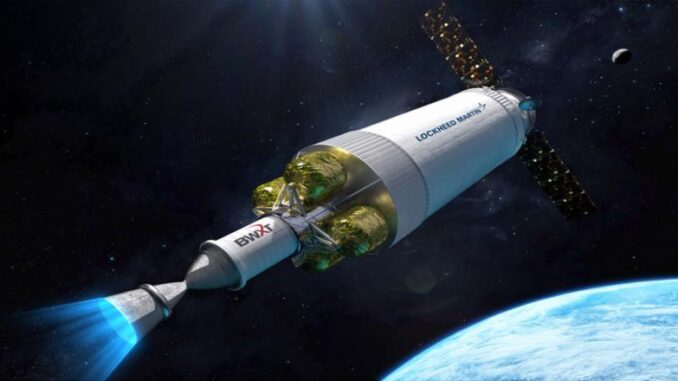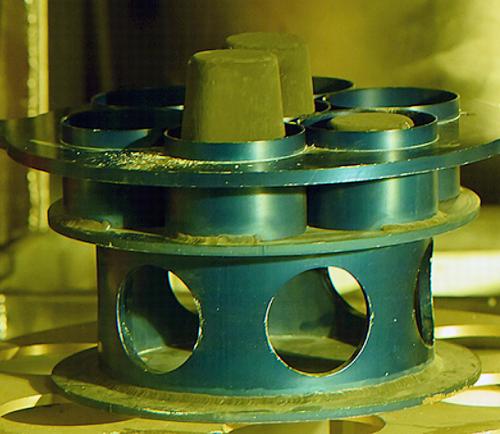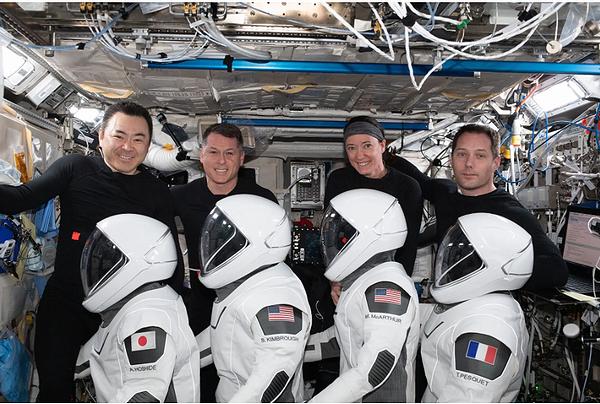
WASHINGTON, DC, October 27, 2023 (ENS) – U.S. defense and space agencies are moving quickly toward the world’s first in-orbit demonstration of a nuclear thermal rocket, NTR.
The U.S. Defense Advanced Research Projects Agency, DARPA, in collaboration with the National Aeronautics and Space Administration, NASA, is working toward the goal via DRACO, the Demonstration Rocket for Agile Cislunar Operations, which focuses on operations between the Earth and the moon.
In January, DARPA and NASA signed an agreement to collaborate on the NTR engine, aiming to more efficiently and quickly transport material through the cislunar realm between Earth and its moon, and, eventually, transport people to Mars.
In July, DARPA finalized an agreement with Lockheed Martin of Bethesda, Maryland for the company to begin fabrication and design of the experimental nuclear thermal rocket vehicle, dubbed X-NTRV, and its engine.
Lockheed Martin said in a statement that the in-space flight demonstration of a nuclear thermal rocket engine vehicle will take place “no later than 2027.”
The goal is to test nuclear thermal propulsion in space, a technology that eventually could help humanity work on the moon, on Mars and on other distant worlds.

“The DRACO program aims to give the nation leap-ahead propulsion capability,” said Dr. Tabitha Dodson of DARPA, program manager for the NTR effort.
“An NTR achieves high thrust similar to in-space chemical propulsion but is two-to-three-times more efficient,” Dodson said. “With a successful demonstration, we could significantly advance humanity’s means for going faster and farther in space and pave the way for the future deployment for all fission-based nuclear space technologies.”
Sometimes, even with decades of research and testing, a project never gets off the ground, and that has been so in the past for U.S. nuclear thermal rockets. Research began in the 1950s and peaked with a series of rigorous ground tests for NERVA, the Nuclear Engine for Rocket Vehicle Applications, before the program was canceled in 1973.
Now, five decades later, this technology has yet to make it to the launchpad. But Dodson says that while mission priorities shift, the physics is solid. Fission-powered nuclear thermal rockets still offer two to five times greater efficiency than conventional rockets.
Chemical propulsion engines have long been the standard for spaceflight, but for humans to travel to Mars, much more powerful and efficient propulsion is needed. Nuclear thermal propulsion engines offer thrust as high as conventional chemical propulsion with two-to-five times higher efficiency, which means the spacecraft can travel faster and farther and can reduce propellant needs, Lockheed Martin said in a statement announcing its involvement in the project.
“These more powerful and efficient nuclear thermal propulsion systems can provide faster transit times between destinations. Reducing transit time is vital for human missions to Mars to limit a crew’s exposure to radiation,” said Kirk Shireman, vice president of Lunar Exploration Campaigns at Lockheed Martin Space.
“This is a prime technology that can be used to transport humans and materials to the Moon,” Shireman said. “A safe, reusable nuclear tug spacecraft would revolutionize cislunar operations. With more speed, agility and maneuverability, nuclear thermal propulsion also has many national security applications for cislunar space.”
Nuclear Tech That’s Safe?
The DRACO program takes advantage of the nation’s early investments in nuclear thermal technology under the previous NERVA program, but with a new fuel option that presents fewer logistical hurdles.
A nuclear thermal rocket system uses a nuclear reactor to quickly heat hydrogen propellant to very high temperatures.

The fission-based reactor will use a special high-assay, low-enriched uranium, or HALEU, to convert the liquid hydrogen held at a very low temperature into an extremely hot pressurized gas.
Then the system funnels that gas through the engine nozzle to create powerful thrust.
The spacecraft is targeted for a 2027 launch from Earth in “cold” status, meaning that the reactor is turned off as a part of launch safety protocols by a conventional rocket, and then the reactor will be powered on once the spacecraft attains an appropriate location above low earth orbit.
DARPA will engineer the system so that the engine’s fission reactor will stay turned off until it reaches its designated nuclear safe orbit, more than 700 miles above the Earth, making the NTP system “very safe,” says Christopher Stone, a senior fellow for Space Studies at the Mitchell Institute’s Spacepower Advantage Research Center in Arlington, Virginia.
“China is also developing SNTP engines to power their military space vehicles, so this technology will be on orbit in the near term whether the US chooses to adopt it or not,” predicts Stone.
“Our military should seize the opportunity to leap ahead of our adversaries by fielding SNTP-powered spacecraft as soon as possible. The technology is mature, the demand pronounced. It is possible to pursue safety and security, and it should be pursued as soon as possible,” Stone stressed.
The U.S. Space Force will provide the launch vehicle that will take the X-NTRV into space in 2027.
The Department of Energy will provide HALEU metal, to be processed into fuel by BWX Technologies based in Lynchburg, Virginia, one of Lockheed Martin’s partners in the NTP effort.
The fuel will be fabricated out of government-owned scrap material containing enriched uranium that is unusable in its present form. BWX will process over two metric tonnes of this material now stored at the Y‑12 National Security Complex located in Oak Ridge, Tennessee, near the Oak Ridge National Laboratory.
BWX Technologies also will develop the nuclear reactor that will power the nuclear thermal rocket in space.
“The award of this contract further demonstrates BWXT’s ability to design, manufacture and deploy nuclear reactors and fuel on a scale that is unmatched elsewhere in the world today,” said Joe Miller, president of BWXT Advanced Technologies. “This partnership with Lockheed Martin working for DARPA adds another important dimension to BWXT’s … line-up of nuclear reactor designs for commercial and defense applications.”
Doing Business in Space
One of NASA’s current strategic goals is to, “Develop a human spaceflight economy enabled by a commercial market.”
In the not-too-distant past, someone had to be sponsored by a government to fly to space. Now, NASA points out, fully private crews strap into commercially owned and operated human space systems for both suborbital and orbital flights.
“NASA is a significant enabler of this change – what I call the commercial spaceflight revolution,” said Phil McAlister, director of commercial spaceflight at NASA Headquarters in Washington. “When conditions became right, private industry, especially startups, were in the right position to cause a major disruption in the business of spaceflight.”

NASA now is working with several American companies to deliver science and technology to the lunar surface through the Commercial Lunar Payload Services initiative.
These companies, ranging in size, bid on delivering payloads for NASA. This includes everything from payload integration and operations, to launching from Earth and landing on the surface of the Moon.
NASA is returning America to the Moon through its Artemis missions. “American innovation is leading the way, and the future at the Moon holds promise for a robust lunar marketplace,” NASA says on its website.
Under the Artemis program, commercial deliveries beginning in 2023 will perform science experiments, test technologies, and demonstrate capabilities to help NASA explore the Moon as it prepares for human missions.
NASA’s strategy stimulates the commercial space industry, which the space agency says “drives new ideas, brings down costs, and grows the business opportunities that can foster a lunar economy and serve other customers for the benefit of humanity.”
“Commercial destinations are a critical capability for NASA as we transition low Earth orbit operations to private industry and open access to space,” says Angela Hart, manager of commercial low Earth orbit development program at NASA’s Johnson Space Center in Houston. “Refining strategies and evolving partnerships are part of the process as we build a robust low Earth orbit economy where NASA is one of many customers.”
Featured image: The U.S. Defense Department’s DRACO Program will demonstrate the ability of nuclear power to propel spacecraft. (Image courtesy BWXT)
© 2023, Environment News Service. All rights reserved. Content may be quoted only with proper attribution and a direct link to the original article. Full reproduction is prohibited.



